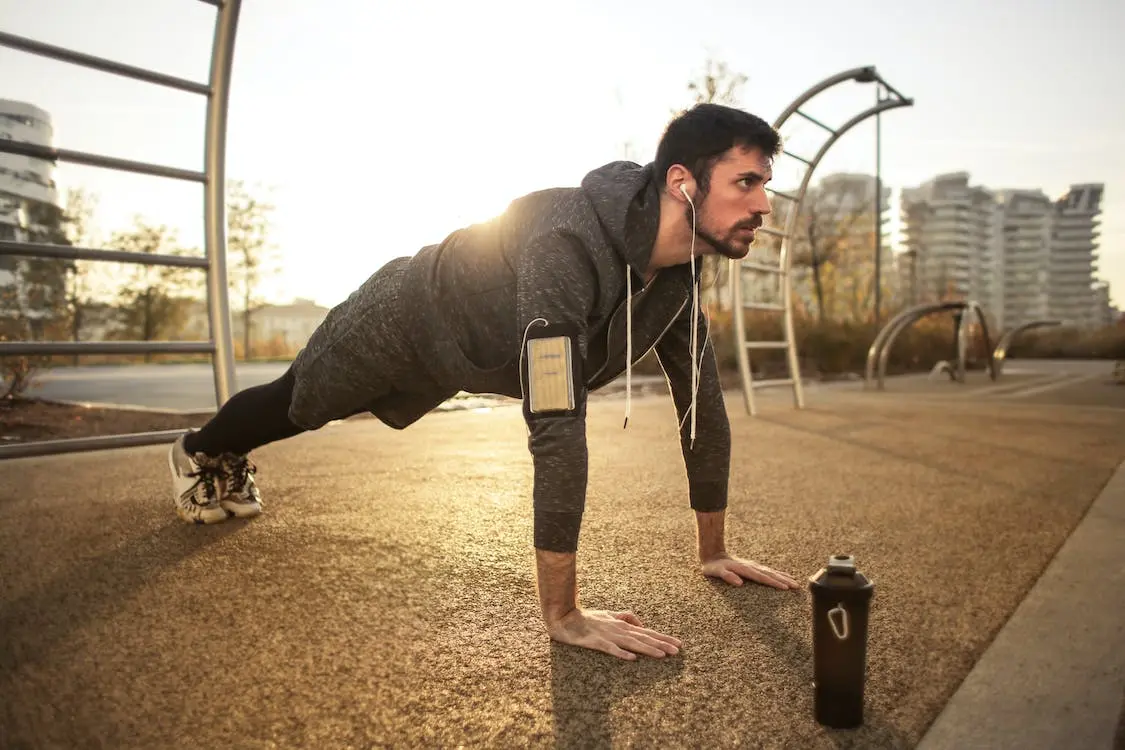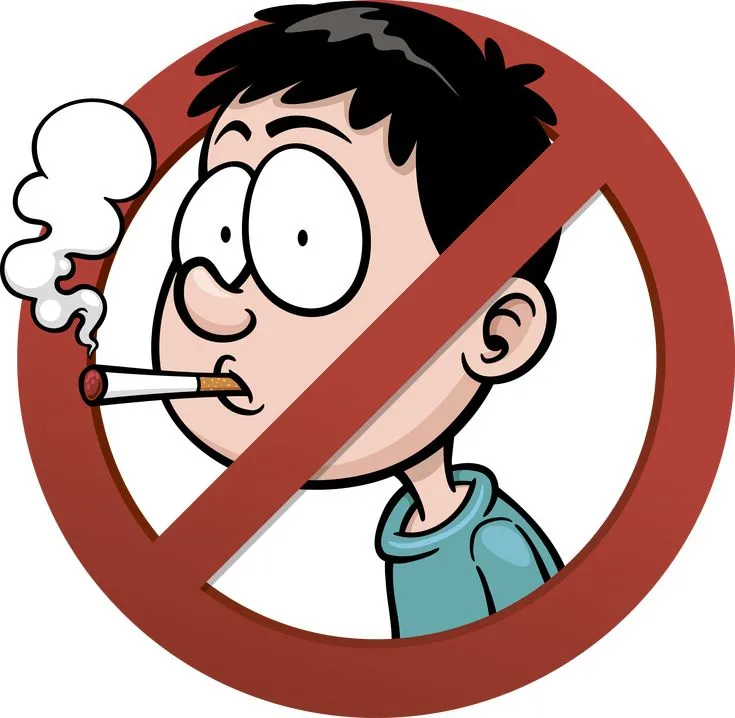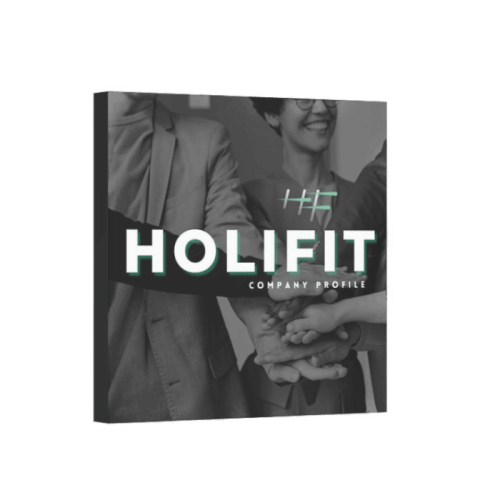Learn five essential suggestions for promoting National Lung health month, respiratory wellness, and maintaining healthy lungs. In this thorough guide, you’ll discover the advantages of regular exercise, quitting smoking, and reducing exposure to pollutants.
Taking care of your respiratory health is vital for your overall well-being. Healthy lungs are essential for breathing efficiently and supporting a thriving life. This comprehensive guide will explore five essential tips to help you maintain healthy lungs and promote respiratory wellness. From the benefits of regular exercise to avoiding smoking and minimizing exposure to pollutants, these tips will empower you to breathe easy and embrace a healthier lifestyle.
1. Regular Exercise: Strengthen Your Lungs and Improve Respiratory Health

Regular exercise is a powerful tool for strengthening your lungs and enhancing respiratory health. When you engage in aerobic activities like brisk walking, jogging, swimming, or cycling, your body’s demand for oxygen increases. In response, your lungs work harder to supply the necessary oxygen to your bloodstream and remove carbon dioxide efficiently.
Over time, this sustained physical activity helps to improve lung capacity, allowing your lungs to hold more air and deliver oxygen more effectively. As your cardiovascular system becomes more efficient, your heart pumps blood more efficiently, supporting better oxygen circulation throughout your body.
This improved lung function boosts overall endurance and reduces shortness of breath during physical exertion and daily activities. Additionally, regular exercise contributes to better overall fitness, which can lower the risk of chronic respiratory conditions like COPD. By incorporating a consistent exercise routine into your lifestyle, you can empower your lungs to function optimally and enjoy the benefits of improved respiratory health.
2. Avoid Smoking: Safeguard Your Lungs from Harmful Toxins

Your respiratory system and general health can suffer from smoking since this exposes your lungs to a toxic mixture of dangerous chemicals and particles. Smoke from tobacco is a leading cause of this, with thousands of chemicals, including nicotine, tar, carbon monoxide, and other carcinogens.
When inhaled, these dangerous substances can harm the lungs’ delicate tissues lining the airways and sacs. Chronic exposure to cigarette smoke causes irritation and inflammation, which weakens the lung’s defense mechanisms and increases the risk of infections like pneumonia and bronchitis. Smoke’s destructive chemicals can damage lung tissue permanently over time. Causing the emergence of long-term respiratory illnesses like emphysema and chronic obstructive pulmonary disease (COPD).
Furthermore, smoking is the main factor in lung cancer, which accounts for many cancer-related fatalities worldwide. Due to inhaling the same harmful toxins found in cigarette smoke, non-smokers are also at risk from secondhand smoke, also known as passive smoking. Knowing these toxins’ detrimental effects makes it even more urgent to stop smoking and safeguard our lungs from irreparable damage.
Your lungs and general health will benefit significantly if you decide against smoking. Preserving lung capacity and function is one of the benefits that stand out the most. By quitting smoking, you give your lungs time to gradually rid themselves of toxins that have accumulated, which lowers inflammation and supports healthier respiratory tissues, As you recover, your lung function may improve, giving you more stamina and endurance for physical activity.
Quitting smoking significantly reduces your risk of contracting chronic respiratory conditions such as COPD and emphysema, which can significantly lower your quality of life. This is particularly true for tobacco products, which only lower your risk of developing lung cancer, shielding your body from this deadly condition and your lungs.
Abstinence from smoking reduces the risk of heart disease and getting a stroke. You’ll also notice an improvement in your senses of taste and smell, which will enhance your enjoyment of food and other aromas.
Last but not least, by refraining from smoking, you help ensure those close to you live in a smoke-free environment, protecting their health and well-being. One of the best choices you can make for the health of your lungs and the path to a happier, healthier future is to stop smoking.
3. Indoor and Outdoor Air Quality: Minimize Pollutant Exposure
Indoor Air Quality: Identifying and Reducing Pollutants
Indoor air quality is influenced by a range of factors, including the use of household products, building materials, ventilation systems, and even the presence of pets. Common indoor air pollutants include tobacco smoke, volatile organic compounds (VOCs) from cleaning agents and paints, mold spores, pollen, and dust mites. Prolonged exposure to these pollutants can lead to respiratory irritation, allergies, and exacerbation of existing lung conditions.
To enhance indoor air quality, consider using natural and non-toxic cleaning products, ensuring proper ventilation, and using air purifiers to filter out harmful particles. Regularly cleaning and maintaining heating, ventilation, and air conditioning (HVAC) systems can also reduce the buildup of contaminants.
Moreover, keeping indoor humidity levels in check can prevent mold growth and the proliferation of dust mites, both of which can trigger respiratory issues. For individuals with allergies or asthma, using allergen-proof bedding and implementing a regular cleaning routine can help minimize exposure to triggers, promoting better lung health.
Outdoor Air Quality: Understanding Environmental Pollutants
Many factors, including vehicular emissions, industrial processes, construction activities, and wildfire events, impact outdoor air quality. The primary outdoor pollutants of concern include particulate matter (PM), nitrogen oxides (NOx), sulfur dioxide (SO2), ozone (O3), and carbon monoxide (CO). Prolonged exposure to these pollutants can lead to various respiratory issues, including aggravated asthma, chronic bronchitis, and decreased lung function.
Individuals living in areas with high pollution levels may experience more significant respiratory health risks. To minimize exposure to outdoor pollutants, stay informed about air quality levels in your area by checking air quality indexes and avoiding outdoor activities during times of high pollution, especially on smoggy or hazy days.
If you live in an urban environment with high traffic congestion, consider using public transportation or carpooling to reduce emissions. When exercising outdoors, try to choose locations away from busy roads or areas with heavy pollution sources. Trees and vegetation can act as natural air filters, so spending time in green spaces or parks can offer cleaner air and provide a refreshing break from urban pollution.
Minimizing Exposure for Respiratory Wellness
In addition to the specific strategies mentioned for indoor and outdoor environments, adopting a few general habits can further safeguard your respiratory health.
- Firstly, avoid smoking and limit exposure to secondhand smoke, as cigarette smoke contains a cocktail of harmful chemicals that can seriously damage your lungs.
- Secondly, maintain a well-ventilated home and workplace, allowing fresh air to circulate and dilute indoor pollutants. Consider using exhaust fans in kitchens and bathrooms to remove excess moisture and pollutants. Regularly change air filters in heating and cooling systems to ensure they function efficiently. Open windows when weather conditions permit to allow natural ventilation.
- Thirdly, invest in high-quality air purifiers that effectively capture and remove indoor airborne pollutants. Choose purifiers with high-efficiency particulate air (HEPA) filters, as they are designed to trap small particles, including allergens and fine dust.
- Finally, take advantage of the power of houseplants, as certain species can help improve indoor air quality by absorbing some pollutants and releasing oxygen.
Proactively assessing and improving indoor and outdoor air quality can significantly reduce exposure to harmful pollutants and protect your respiratory health. Incorporate these measures into your daily life, and you’ll take crucial steps toward creating a healthier environment for yourself and your loved ones. Prioritizing clean air is an investment in your long-term well-being, ensuring you can breathe easily and enjoy a more vibrant, healthier life.
4. Nutrition for Healthy Lungs: The Power of a Balanced Diet

Benefits of a Healthy Balanced Diet for Healthy Lungs
A well-balanced diet is a cornerstone of overall health, and its importance extends to maintaining healthy lungs. Our food provides the necessary nutrients for properly functioning our respiratory system, supporting lung health, and minimizing the risk of respiratory problems. A healthy balanced diet also supplies essential vitamins, minerals, antioxidants, and other nutrients that promote lung tissue repair, boost immune function, and reduce inflammation.
By nourishing our bodies with the right foods, we can enhance lung capacity, improve oxygen exchange, and protect against lung-related diseases. Additionally, a balanced diet helps maintain healthy body weight, reducing the strain on the respiratory system and lowering the risk of obesity-related respiratory issues. As we explore the power of nutrition for lung health, it becomes evident that making informed dietary choices is a proactive step toward ensuring optimal respiratory wellness.
The Elements of a Balanced Diet for Healthy Lungs
A balanced diet for healthy lungs consists of various nutrient-dense foods that provide the essential components necessary for proper lung function and overall well-being. Here, we will delve into the key elements of a lung-friendly diet and discover foods supporting respiratory health.
1. Fruits and Vegetables
Fruits and vegetables are rich sources of vitamins, minerals, and antioxidants that help protect lung tissues from oxidative stress and inflammation. Vitamin C, found abundantly in citrus fruits, strawberries, and bell peppers, supports the immune system and may reduce the risk of respiratory infections. Beta-carotene, found in carrots, sweet potatoes, and leafy greens, is essential for lung tissue repair and maintenance. Additionally, the phytochemicals present in various fruits and vegetables have anti-inflammatory properties that can alleviate lung inflammation and promote better lung function.
2. Whole Grains
Whole grains, such as brown rice, quinoa, whole wheat, and oats, provide a steady source of complex carbohydrates, fiber, and essential nutrients. These carbohydrates serve as the primary fuel for the body, supporting energy production and overall endurance, which is particularly beneficial for lung health during physical activity. The fiber in whole grains aids in digestion and can help reduce the risk of respiratory conditions such as asthma and chronic bronchitis.
3. Lean Proteins
Proteins are vital for tissue repair and immune function. Opt for lean protein sources such as poultry, fish, beans, lentils, tofu, and low-fat dairy products. Omega-3 fatty acids, commonly found in fatty fish like salmon and sardines, have anti-inflammatory properties and can support lung health by reducing inflammation in the airways. For vegetarians and vegans, incorporating plant-based protein sources like quinoa, chia seeds, and nuts can provide similar benefits.
4. Healthy Fats
Including sources of healthy fats in the diet can contribute to better lung health. Avocados, nuts, seeds, and olive oil are excellent sources of monounsaturated fats, which have anti-inflammatory effects and can promote healthy lung function. Incorporating these fats in moderation can also help improve nutrient absorption from other foods.
5. Hydration
Adequate hydration is essential for maintaining the thin mucus lining in the airways, which acts as a protective barrier against pathogens and irritants. Drinking enough water throughout the day helps keep the respiratory system moist and can ease breathing, especially in dry or arid environments.
6. Limiting Processed and Sugary Foods
Reducing the consumption of processed foods, sugary snacks, and sugary beverages is essential for lung health. These foods often lack essential nutrients and can contribute to inflammation and weight gain, which can strain the respiratory system. Reducing sugary foods and beverages can also reduce the risk of developing conditions such as type 2 diabetes and obesity, which are associated with respiratory complications.
By embracing a balanced diet incorporating these essential elements, we can fortify our respiratory health and enhance our overall well-being. These dietary choices benefit our lungs and support our body’s entire system, allowing us to lead a more active and fulfilling life. As we continue to prioritize nutrition for lung health, we unlock the tremendous power of food in shaping our respiratory wellness and overall longevity.
5. Breathing Techniques and Lung Health: Unlocking the Full Potential

Did you know how you breathe can influence your lung health? Breathing techniques, such as diaphragmatic breathing and pursed-lip breathing, can improve lung function, reduce stress, and enhance oxygen delivery to the body. We will introduce various breathing exercises and practices that can optimize your respiratory wellness and provide step-by-step guidance on incorporating them into your daily life.
Diaphragmatic Breathing
Diaphragmatic breathing, also known as abdominal or deep breathing, is a breathing technique that involves engaging the diaphragm, a dome-shaped muscle located below the lungs, to facilitate a more efficient and relaxed breathing pattern. This technique is often used in practices like yoga, meditation, and certain forms of physical therapy to improve lung function and manage stress. Diaphragmatic breathing promotes the full expansion of the lungs, allowing more oxygen to be drawn into the lower parts of the lungs where gas exchange is most effective.
How to Perform Diaphragmatic Breathing:
- Find a comfortable seated or lying position.
- Place one hand on your chest and the other on your abdomen.
- Take a slow, deep breath through your nose, focusing on expanding your abdomen (feel it rise) while keeping your chest relatively still.
- Exhale slowly and thoroughly through your mouth, allowing your abdomen to fall back to its resting position.
- Continue this breathing pattern, maintaining a steady and relaxed pace.
Benefits of Diaphragmatic Breathing:
Diaphragmatic breathing offers numerous benefits for respiratory health and overall well-being. By engaging the diaphragm more effectively, this technique allows for a greater volume of air to be exchanged during each breath, increasing the oxygen supply to the body. This enhanced oxygenation can reduce breathlessness, improve lung function, and decrease respiratory effort during physical activities. Diaphragmatic breathing also helps activate the parasympathetic nervous system, promoting relaxation and reducing stress, anxiety, and tension. By incorporating diaphragmatic breathing into your daily routine, you can harness the power of your breath to support optimal respiratory health and mental well-being.
Pursed-Lip Breathing
Pursed-lip breathing is another technique that can benefit individuals with certain respiratory conditions, particularly those with chronic obstructive pulmonary disease (COPD) or asthma. This technique helps control the airflow rate during exhalation, preventing the airways from collapsing prematurely and promoting better gas exchange within the lungs.
How to Perform Pursed-Lip Breathing:
- Sit comfortably with your back straight.
- Inhale gently through your nose for a count of two.
- Part your lips slightly and exhale slowly and steadily through your mouth for a count of four. Imagine you are blowing out a candle.
- Make sure to keep the exhalation smooth and controlled, avoiding forceful or rapid exhalation.
Benefits of Pursed-Lip Breathing:
Pursed-lip breathing can be a helpful tool for managing breathlessness and improving oxygenation, especially during activities that require more effort, such as walking uphill or climbing stairs. By slowing down the exhalation and maintaining a slightly narrowed airway, pursed-lip breathing creates backpressure in the airways, preventing them from collapsing too quickly and allowing more time for oxygen to be exchanged between the alveoli and the bloodstream. This technique also helps reduce respiratory rate and normalize carbon dioxide levels, benefiting individuals with COPD or asthma who tend to hyperventilate during exertion. Regular practice of pursed-lip breathing can enhance exercise tolerance and promote better control over breathlessness, empowering individuals with respiratory conditions to stay more active and engaged in daily activities.
In conclusion, putting respiratory health first by regular exercise, quitting smoking, cleaning up the air inside and outside, eating a healthy diet, and employing particular breathing techniques like diaphragmatic and pursed-lip breathing can significantly positively impact our lungs and general health.
Regular exercise enhances lung capacity and efficiency, making everyday activities easier and reducing the risk of respiratory issues. Avoiding smoking or secondhand smoke is crucial to protect our lungs from harmful toxins and lower the risk of severe respiratory conditions like lung cancer and COPD.
Improving indoor air quality by using natural cleaning products, ensuring proper ventilation, and using air purifiers can reduce exposure to indoor pollutants and enhance respiratory health. Additionally, being mindful of outdoor air quality and minimizing exposure to outdoor pollutants can safeguard our lungs from further harm.
A balanced diet rich in fruits, vegetables, whole grains, lean proteins, and healthy fats provides essential nutrients and antioxidants that support lung tissue repair, strengthen the immune system, and reduce inflammation.
Lastly, incorporating diaphragmatic and pursed-lip breathing techniques into our daily routines can improve lung function, manage breathlessness, and promote relaxation, benefiting individuals with respiratory conditions like COPD and asthma.
By taking proactive steps to prioritize our respiratory health, we empower ourselves to breathe easier, enhance our lung function, and enjoy a more vibrant and fulfilling life. A healthy respiratory system is a fundamental pillar of overall well-being, and by nurturing our lungs, we lay the foundation for a healthier and more active future. Embracing these practices positively impacts our respiratory health and is a robust investment in our long-term quality of life. Remember, each breath we take is an opportunity to support our lungs and promote optimal respiratory wellness.
If you’re interested in more and want to meet with us, you contact us at info@holifit.ph and discover how HoliFit can help your business reach its goals. You can also check out our Facebook page, Instagram, LinkedIn, and Youtube Channel for more information about our services.
Don’t miss out on this opportunity. To find out how HoliFit can help your business reach its goals through Webinars – contact us today!

